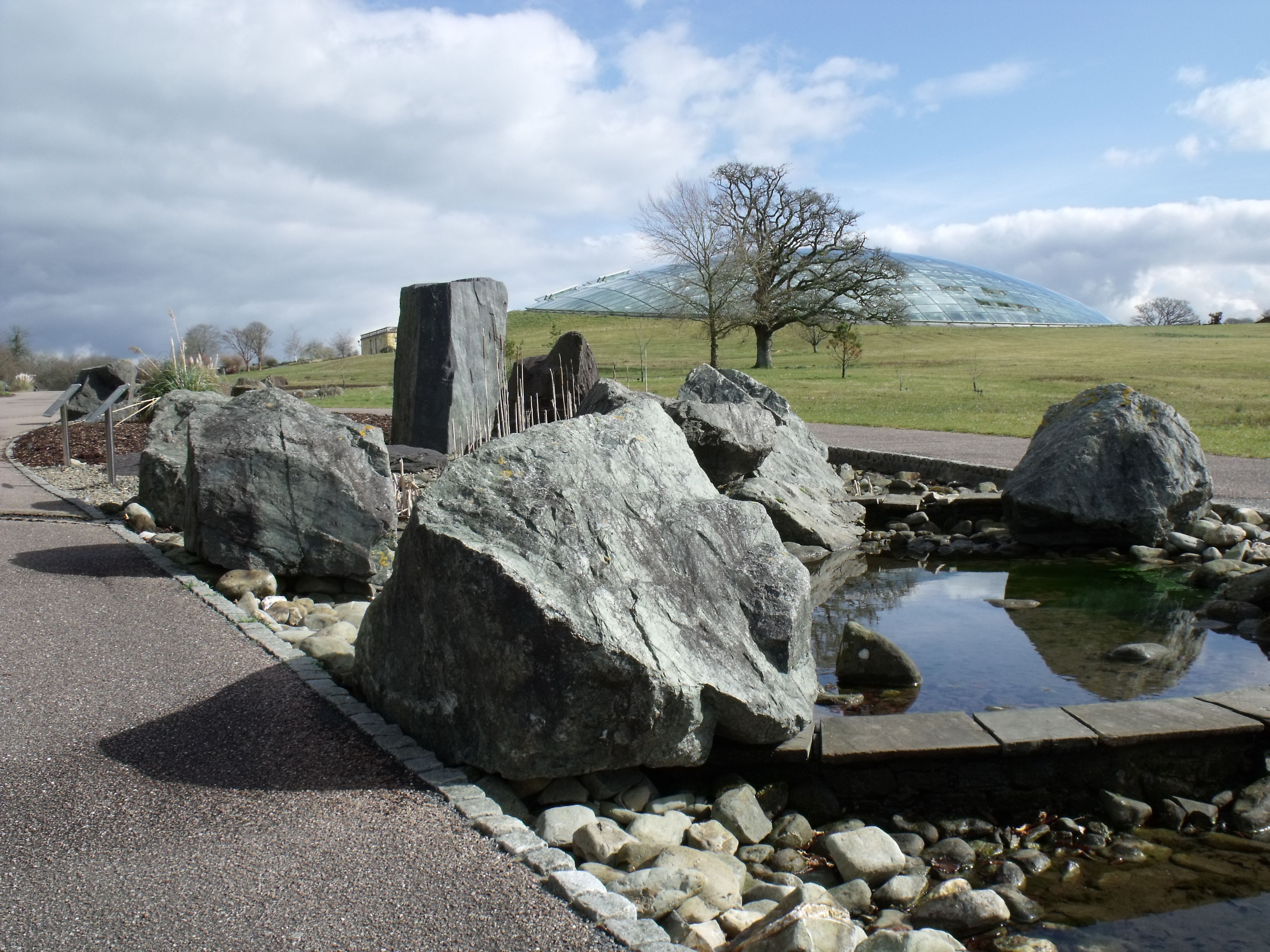310 million years old
Can you see the fossils on the surfaces of these blocks of Pennant Sandstone? Look for large long lines. These are the remains of 30m high Calamites trees, distant relatives of horsetails Equisetum sp.that grow up to 1m tall in our gardens and ponds.
Great rivers swept sediment into the shallow seas that the limestone formed in. Intertidal sediments were deposited first, and later, deltas and tropical swamps developed along the banks of the main river channels. These created a landscape similar to today’s Mississippi Delta.
When the river banks collapsed, a large number of trees growing along them collapsed into the channel, forming a log jam. You can see remains of a log jam on the rock surfaces to your right.
Black Diamonds
Decayed plants of the enormous tropical-swamps of the Carboniferous Period gave rise to the coal seams of south Wales. Look hard and you might see fine bits of coal on the surfaces of these rocks. But the compacted sand grains mainly make up this Pennant Sandstone.
Where do these rocks come from? Redland Hafod Fach Quarry, Abercam, Gwent
